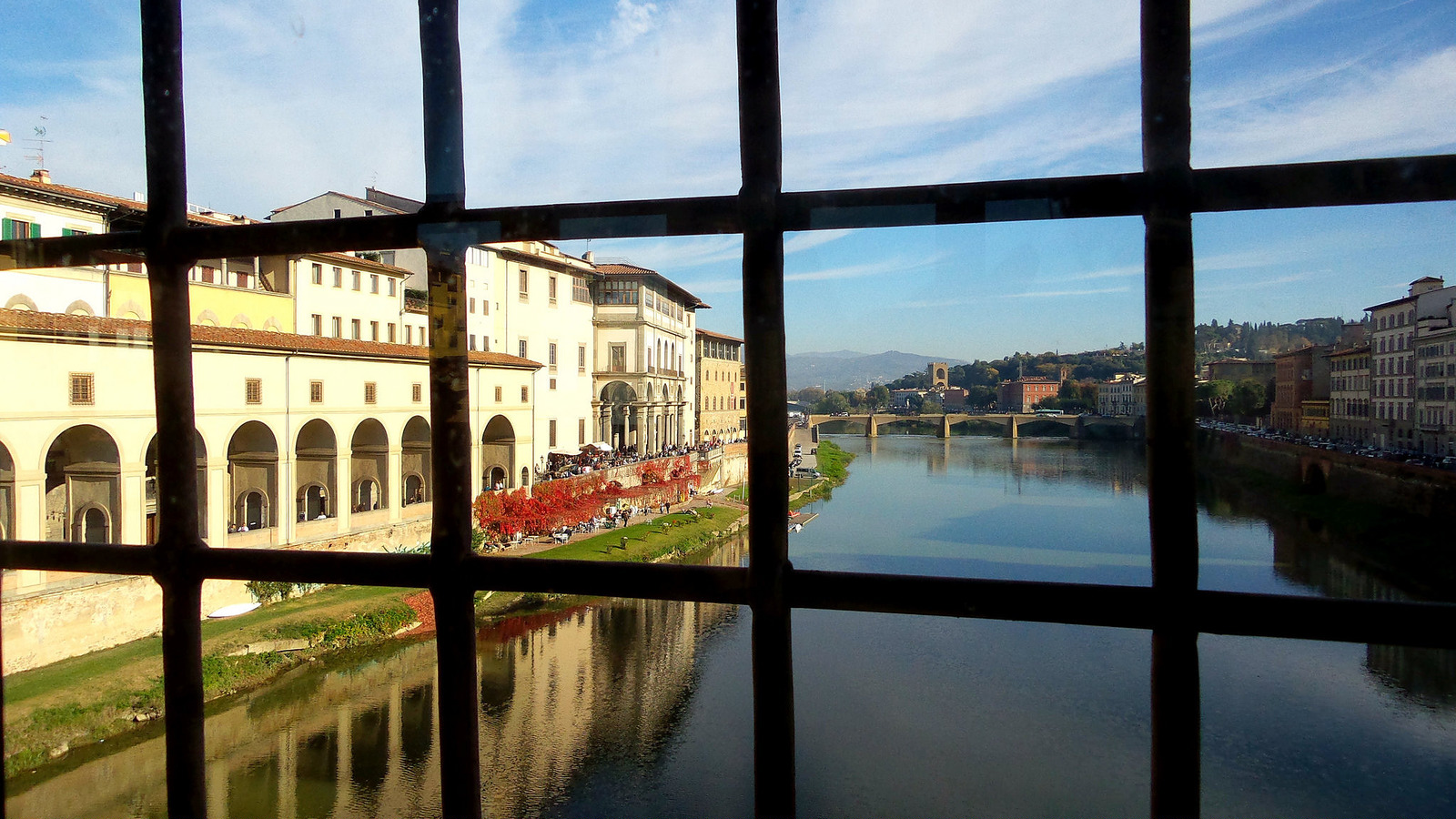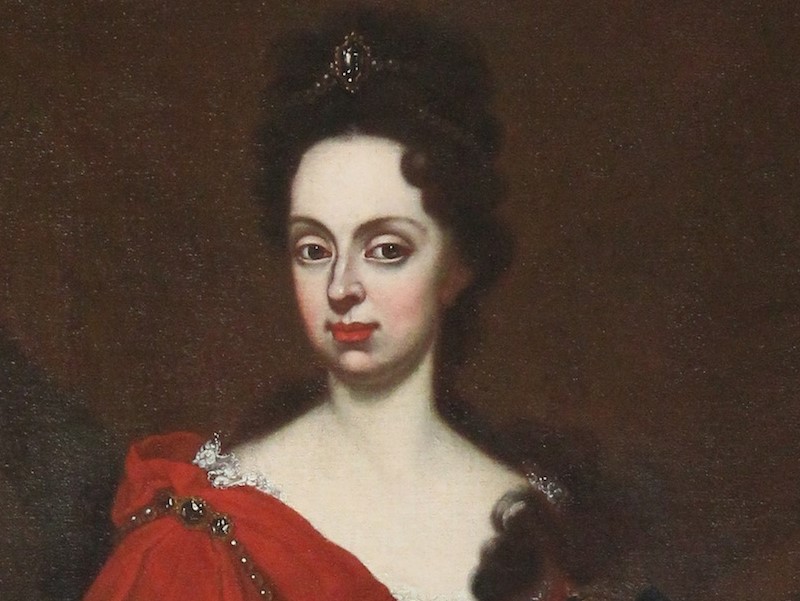Il Vasarian Corridor it is one of the most fascinating and atypical architectural works of our country and perhaps of the world. But even more intriguing than its beauty is the birth, the many lives and, more generally, the history that surrounds this place and which is linked to a absolute genius of Italian architecture. He was from Arezzo, he was a wanderer, he had served two popes and in addition to being a painter and architect he was the first art historian. He was called Giorgio Vasari.
Cosimo I and Vasari: the fathers of the Corridor
Vasari returns in Florence in 1554 at the behest of the duke Cosimo I. Despotic but prone to beauty, Cosimo had called him years earlier to renovate Villa Castello and now he wants modernize Palazzo della Signoria. We had moved from Medici Palace in 1540, then Eleonora of Toledo she had fallen in love with Palazzo Pitti. Thus, Palazzo della Signoria had become Palazzo Vecchio. In 1560, the works proceeded well and then Cosimo entrusted him with a new project: the Uffizi. The duke's vision is daring, but Vasari accepts: he is already there for the other construction site. He does not imagine that the real enterprise, more in terms of timing than grandeur, will be accomplished a few years later. In 1564, Cosimo has great plans. After many unsuccessful attempts, he in fact got a wedding advantageous for the son Francesco to which he has just left, at least formally, the Duchy. The chosen is Joan of Austria, sister ofemperor Maximilian II.

Cosimo has a goal: Florence served with honor first Charles V and then Ferdinand I and deserves to be independent, no longer a vassal of the empire. Above all he, Cosimo, wants to be king. The title of Grand Duke he will get it in 1569, but from Pope Pius V, sparking the ire of Maximilian II.
In that 1564, however, Cosimo had been in power for thirty years, he began to be old, tired, widowed and would like to retire, but did not trust enough in his son's abilities. He must continue to govern then, but he will do so in the shadows. And this is where he has the intuition: a corridor with windows that connects Palazzo Pitti to Palazzo Vecchio. Thanks to it i doctors, their guests and especially him will be able to pass from one part of the city to another in total safety, without guard and with the possibility of spy on the people.
The path of the passage and the Mannelli veto
Vasari writes the project down. In his mind, the corridor starts from Green Room of the Duchess Eleonora in Palazzo Vecchio, passes over Via della Ninna, runs through the Uffizi and, climbing over Lungarno degli Archibusieri, arrives atArno. However, the river must be crossed, so the Arezzo area thinks of skirting it and exploiting it Old Bridge: Vasari Corridor will overlook the shops del ponte then owned by butchers, pizzicagnoli and herbals. From here all that remains is to pierce Mannelli Tower, continue above via de 'Bardi and head towards Palazzo Pitti, expropriating the expropriable. Exactly, a kilometer of corridor to be traveled with two-seater wheelchairs, equipped with benches for stops and a decorated bathroom. Yes, since on the way you pass over the loggia of the Church of Santa Felicita, we might as well create a closed box which allows the family to attend religious services.

But there is a problem: the Mannellis do not consent to expropriation. Cosimo and Vasari know that the Mannellis are stubborn and powerful and a dispute is to be excluded, especially for a matter of timing. Yes, because at Vasari there is no time: the wedding are set for 18th December and Cosimo has already set up a busy calendar of celebrations, then it must be ready in September. If the works begin in March, there are six months to build it. So what to do with the Mannelli? Get around them literally, using gods corbels (o shelves) in pietra serena on which to rest the Corridor. Incredibly, in September everything is ready and Vasari just has to go back to taking care of the construction site of the Uffizi, whose slow progress worries the Duke.
However, neither one nor the other will be able to see them finished: Cosimo died on 21 April 1574 and just two months later his trusted architect followed him.

The life of the Corridor after Vasari
The Vasari Corridor continued its function of "passage" for almost a century, but from the mid-seventeenth century on the Medici forgot about it. Ferdinand II began to use it less and less and Cosimo III in his 53 years of government he much preferred to use the Corridor carriage. In the end, it is said, it was most used by offenders to hide that from the grand dukes. When the Medici family did died out with the death without heirs of Gian Gastone in 1737, the power passed into the hands of Francesco Stefano of Lorraine that in a few years he would become emperor, marrying Maria Theresa of Habsburg.

Precisely in that 1737 Anna Maria Luisa, the last of the Medici, said the greatest gift that his city could receive, or stipulated with Francesco Stefano the Family Agreement: all the national cultural heritage owned by the Medici, it passed to the Lorraine, but he would never, ever be able to cross the borders of the Grand Duchy and, above all, it would become public. It followed that they became public The Uffizi, who had lost their political function for years to become the private gallery of the Medici. Consequently, also the Vasari Corridor it definitively lost the role of "passage" and slowly began that of museum "appendix". It was only after the war, however, that the Corridor became the home of the largest collection of self portraits of the world: Filippo Lippi, Rembrandt, Delacroix, De Chirico, Guttuso, Morandi, Chagall and of course Giorgio Vasari. Everyone, absolutely everyone, has a place in the Vasari Corridor.
The Vasari up to the present day
The Vasari Corridor then lived more lives. Lives that gave him that back strategic function for which Cosimo I and Vasari had conceived it. During the Second World War i partisans they often used it as passage, exactly as seen in Paisa di Rossellini. In August 1944, the Germans decided to blow up bridges of Florence before retiring. For absurdity, only Ponte Vecchio was saved and so is the Corridor. Some say that Hitler had decided to save him. Others that the merit was of the rebel consul Gerhard Wolf. But the Florentines will tell you that the real hero was Burgassi (or Burgasso), an old and crippled assistant to the goldsmiths, who cut the threads of the mines in the night. The Vasari Corridor was however damaged by the bombing: the beautiful sixteenth-century bathroom paid the price, but overall the damage was limited.

More serious were the consequences of the mafia attack onGeorgofili Academy. It was the night of 27 May 1993, these were the years of the State-Mafia war. The car bomb placed in via de 'Georgofili caused the collapse Tower of the Fleas, destroyed some rooms of the Uffizi, part of the Vasari Corridor and a quarter of the works contained in those rooms, but above all killed five people who had nothing to do with that war. In comparison, the damage done a few weeks ago to one of the columns of the Corridor on the Lungarno degli Archibusieri by an unconscious truck driver is laughable. Just a small setback pending its reopening.
In fact, in 2020, the Corridor will finish its restoration and everyone will be able to look back at Florence from its windows. Just as Cosimo I did every morning, when walking with Vasari he probably always asked him the same question.
"Messer Giorgio, when is the end of the Uffizi?"





